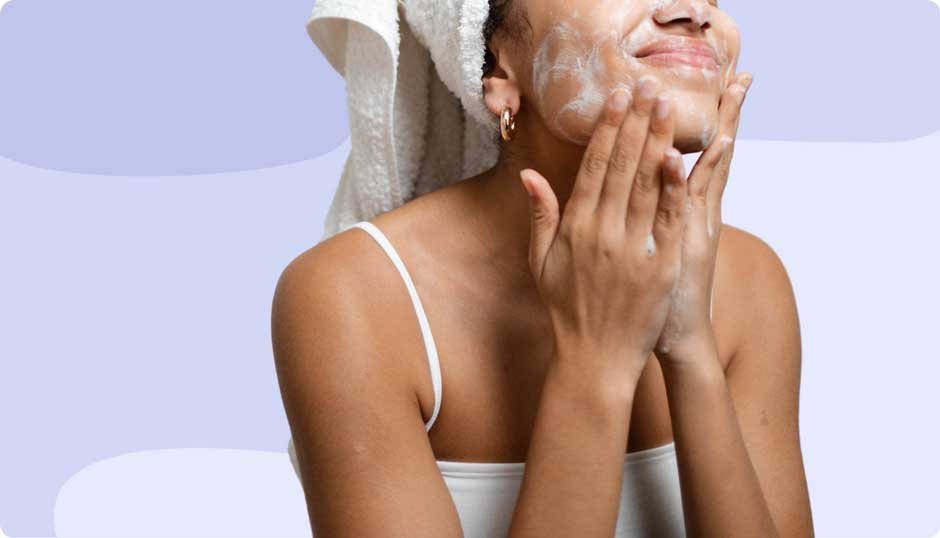Tretinoin is an effective topical treatment for acne and other skin conditions. It helps to reduce the appearance of blemishes, fine lines, and wrinkles. Many people are now incorporating tretinoin into their skincare routine, as it can provide visible results in a short amount of time. This blog post will explore how to use tretinoin in your skincare routine to help treat and prevent acne breakouts.
What is tretinoin?
Tretinoin is a topical prescription for treating acne and other skin conditions, such as wrinkles and sun damage. It is a vitamin A derivative and belongs to a group of medications called retinoids. Tretinoin works by increasing the cell turnover rate in the skin, which helps clear clogged pores, reduce inflammation, and diminish the appearance of wrinkles. It also helps to increase collagen production, which improves skin elasticity and overall texture. In addition to its use for acne treatment, tretinoin can be used as part of an overall skincare routine to improve the health and appearance of the skin.
How to use tretinoin in a skincare routine
Tretinoin is a powerful acne treatment that can help reduce breakouts and improve the appearance of your skin. It is commonly used in prescription-strength creams and gels but can also be a part of a skincare routine. To integrate tretinoin into your daily skincare routine, remember these tips for effective results:
- Before applying tretinoin cream—or any other leave-on cream, lotion, or gel—cleanse your face with a gentle, skin-friendly cleanser.
- For best results, apply tretinoin before bed. Begin by applying a small amount two to three times per week and gradually increase usage as you become more comfortable.
- As your skin acclimates to tretinoin, begin using it more frequently. As you progress, increase the days you apply tretinoin per week. Eventually, your skin will become accustomed to the treatment.
- If you experience dryness or irritation after using tretinoin, apply a moisturizer before using it.
- Use a pea-sized amount to apply a thin layer to the face and neck. Keep in mind that less is more to reduce skin irritation.
- Tretinoin may cause dry skin or peel. Stop using the product and consult a dermatologist if you develop facial swelling or hives.
- Complete your routine by layering skincare products with tretinoin to achieve your skincare objectives. Two examples are a vitamin C serum for its anti-aging properties and hyaluronic acid for its moisturization ability.
- Use sunscreen every day as usual. You can notice a little dryness to your skin and increased sun sensitivity. Employ a broad-spectrum sunscreen that has an SPF of 30 or more. Keep in mind that the best sunscreen is the one you will apply frequently.
It can take up to 12 weeks to see results, so staying consistent and patient with your skincare routine is important. If you experience any side effects, such as redness, dryness, or irritation, it is best to reduce the frequency of application. Suppose you still have questions about using tretinoin for acne treatment. In that case, you should talk to your doctor or dermatologist for more personalized advice.
Who should use tretinoin?
Tretinoin reduces age-related symptoms like wrinkles and dark spots. It also works to treat acne. Tretinoin might be the best option for you if you are seeking a single medication that treats acne and slows down the passage of time. Review its uses and advantages with your dermatology specialist or healthcare practitioners.
What are the side effects of tretinoin?
Tretinoin is a very effective acne treatment but can also cause side effects. Common side effects of tretinoin include burning, stinging, or skin redness. Other side effects may include mild irritation, dryness, peeling, scaling, itching, and burning. In some cases, tretinoin can also cause sun sensitivity, which may lead to sunburn or an increase in wrinkles.
If you are experiencing any of these side effects, it is important to speak with your doctor. Your doctor may recommend reducing the amount of tretinoin you use or switching to a different product. Additionally, it is important to always use sunscreen while using tretinoin.
When should you see a doctor?
If you are considering using tretinoin as part of acne treatment, it is important to consult your doctor first. It is because tretinoin can be strong and therefore need to use carefully. While tretinoin can improve the appearance of your skin, it can also cause serious side effects if used incorrectly or too often. Your doctor can recommend a suitable dosage and frequency for your skin type and existing skin conditions. They may advise about other treatments or products better suited for your skin. Additionally, your doctor can monitor your skin’s progress to ensure the treatment is working and safe. Be sure to ask them any questions you may have about the use of tretinoin.
Final thoughts:
Tretinoin is an incredibly effective acne treatment that can help improve the appearance of the skin when used properly. It is important to ensure you follow the instructions and do not overuse the product, as this could lead to irritation or other side effects. With regular use and patience, tretinoin can help to improve your skin and reduce the appearance of acne. Be sure to talk to your doctor about your concerns about using tretinoin for your skincare routine.


Comments are closed.